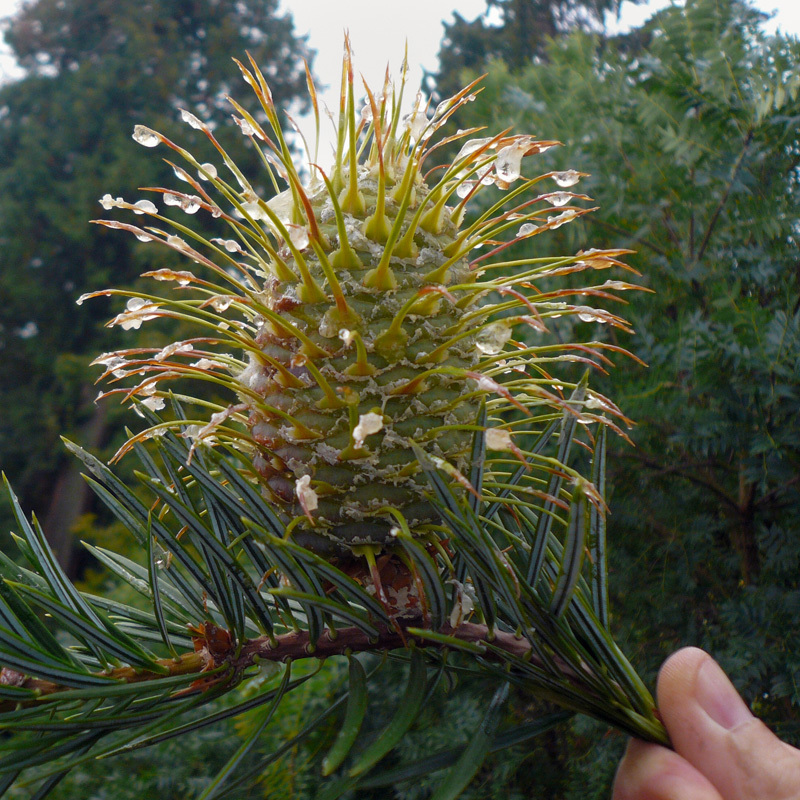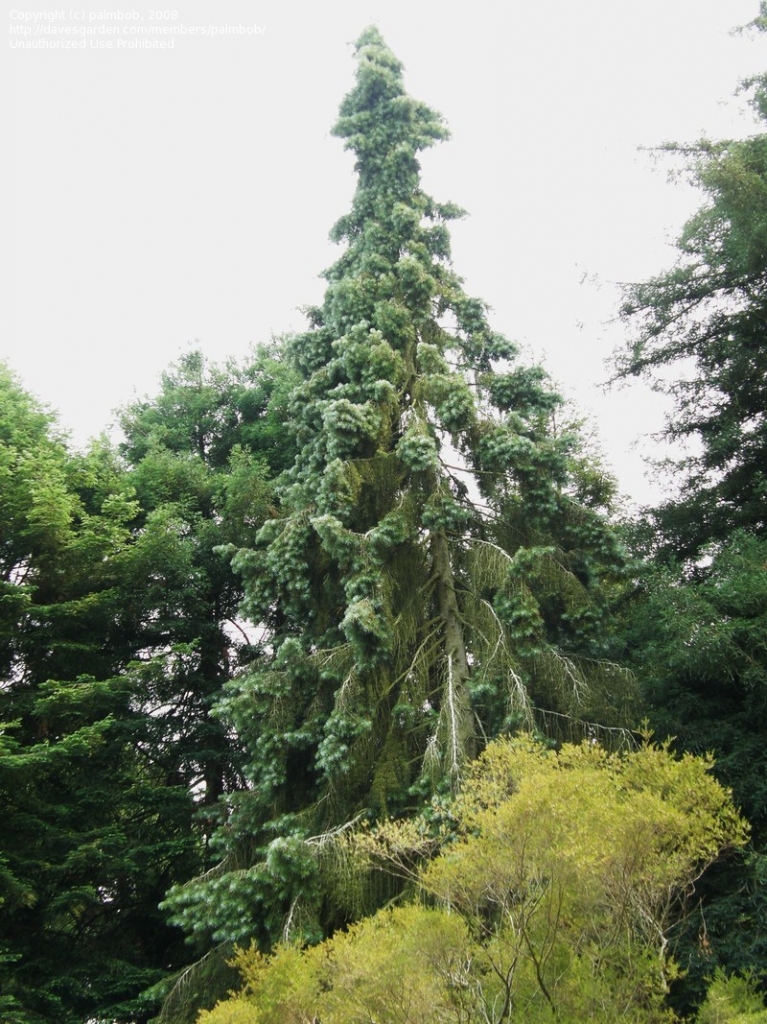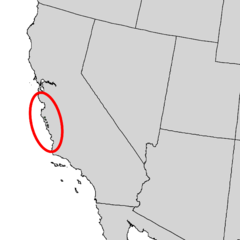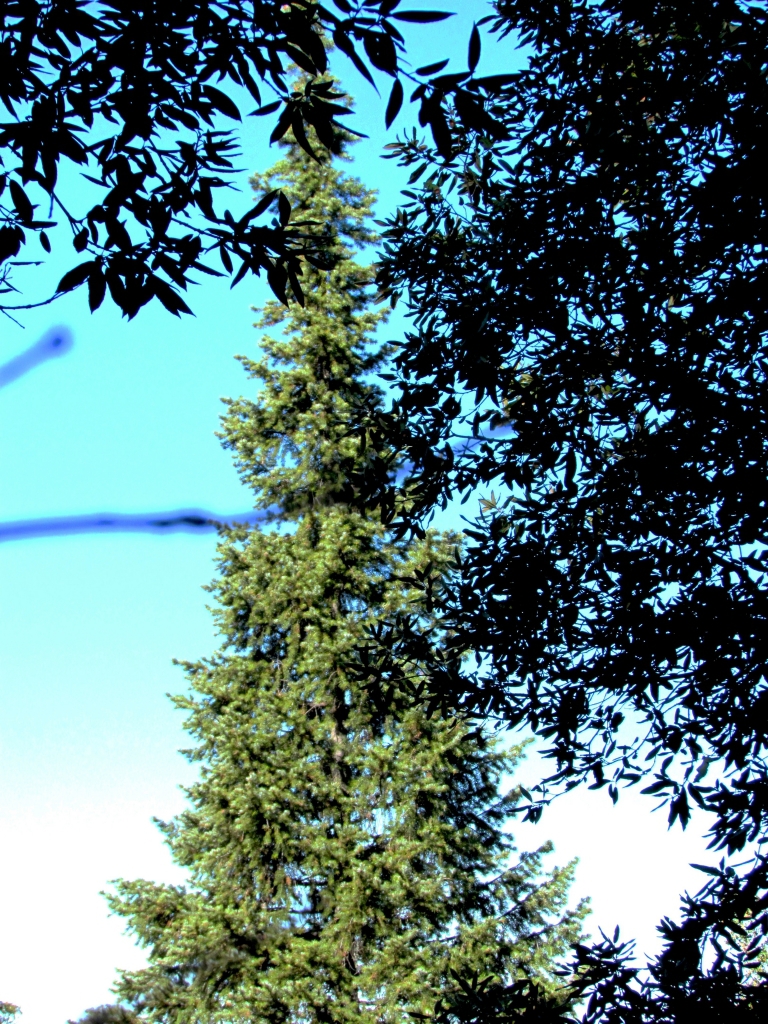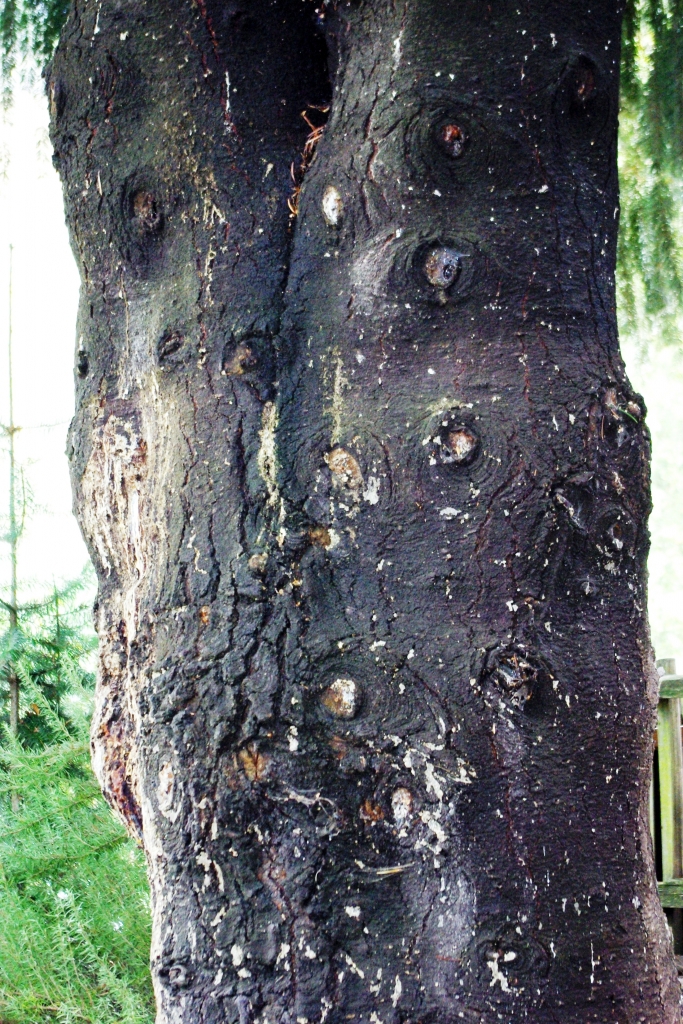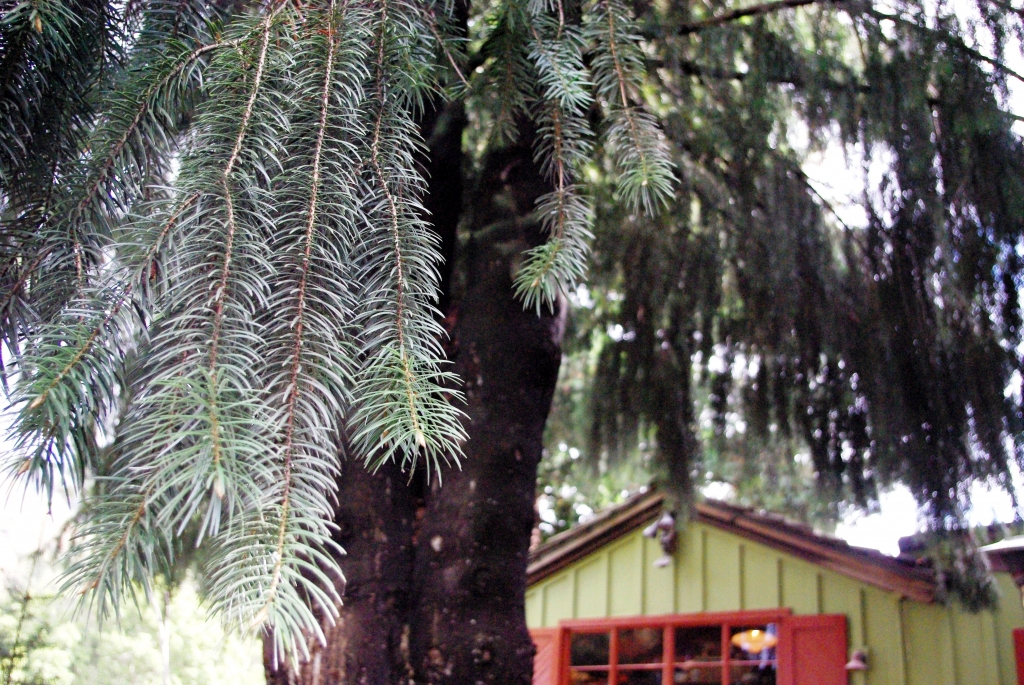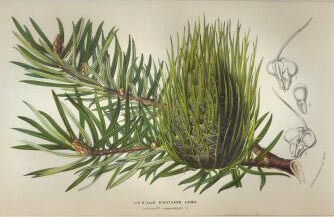
Abies bracteata, as described in 1845 by David Don (1799-1841), with work later completed by Pierre Antoine Poiteau (1766-1854), in Revue Horticole (Paris), 4th edition, is commonly known Santa Lucia, bristlecone, or silver fir; as well as fringed spruce. The species name recognizes the peculiar bracted seed cones.
Description. Santa Lucia fir is an evergreen, coniferous species of tree that grows to mature heights of 65 to 110 feet (20 - 35 m), with a slender, spire-like structure.
Exceptional trees of 182 by 13.5 feet (54.6 x 4 m) exist in Los Padres National Forest, California, USA (1976) and 122 x 15.5 feet (36.6 x 4.7 m) at Eastnor Castle, Herefordshire, England (1970).
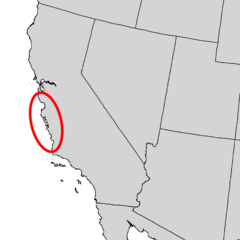
Distribution. This species is primarily limited to west coast cultivation, but even in California most specimens are young. Its natural range is a few isolated groves in the Santa Lucia mountains of Monterey and San Luis Obispo Counties in coastal California, on moist canyon bottoms.
Chris Earle relates many more interesting observations about this unique species in The Gymnosperm Database.
"There has been considerable conjecture as to this tree once having a wider range. The fossil record attributed to this tree in the past, however, is a series of misidentifications, and no sound evidence exists for this tree in any fossil flora, excepting one possible needle and seed from western Nevada, and this is still under study by Dr. Axelrod at U.C. Davis. We have no idea as to when the fir arrived in the Santa Lucia Mountains or where it came from. As to why it is not found elsewhere in the West today we can ask ourselves: Where else can high equability, heavy winter rains with long dry summers, and large areas of fireproof topography be found. The answer is nowhere but the Santa Lucia Mountains for all of western North America" (Talley 1972).
